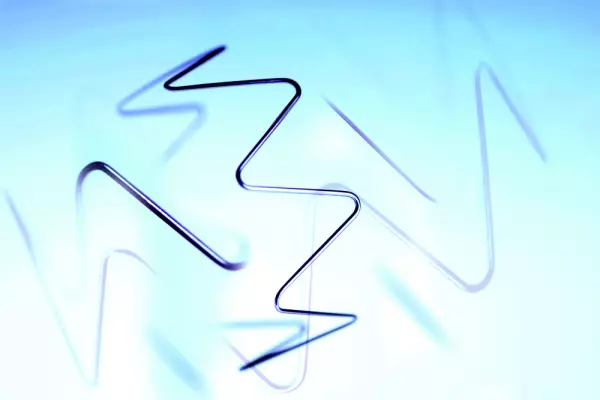
EUROFLEX offers customers our expanded line of medical components and new, custom designed solutions...
Portal and digital medical technology fair of the largest MedTech cluster in Germany

EUROFLEX offers customers our expanded line of medical components and new, custom designed solutions...

The National Institute for Health and Care Excellence (NICE) recommends drug-eluting stents for small and long arteries for patients who have a high risk of re-narrowing after angioplasty. Whether a stent will be implanted is a matter of personal choice, but it is critical that a stent meets the requirements of an ASTM specification. Clinically relevant endpoints of stents include vessel patency and TIMI flow classification.
The stent frame is made of medical-grade stainless steel or "memory metal" such as nitinol. In addition, stents are usually coated with bioabsorbable materials, which dissolve over weeks. The material also releases a drug to prevent clotting and scarring. A stent is not a permanent solution to a clogged artery. The risk of restenosis is minimal and the risk of restenosis is low.
The study protocol should detail the methods of explantation and examination of the healing process. The procedures should include the methods for tissue processing, including the dehydration, embedding, sectioning, and staining of the stent. The researchers should also detail the analytical methods used and the results of these studies. Interviews with senior stent product suppliers in South Korea were also conducted. In addition to the primary research, the secondary research was conducted to further understand the effectiveness of the stents on preventing blockages in the coronary artery.
The use of stents helps to reopen blocked arteries and reduce symptoms of obstructive artery disease. In some cases, stenting can replace bypass surgery in patients with multiple coronary artery blockages. However, in others, it may be preferred over the latter. The surgical process is less invasive and can help to avoid complications, such as restenosis. For this reason, it is important to choose the stent that best suits your condition.
A stent is a small, metallic mesh tube that is placed in an artery to help restore blood flow. Its primary use is in a partially blocked artery, which is a sign of arterial plaque. As a result, a stent will hold the blood vessel open until the body can coat the stent with its own cells. This process usually takes six months. The stent is inserted through an incision in the heart, and a surgeon will insert the device.
The risk of a stent should be weighed against the benefits. Compared to the risks of a stent, the risks of not getting one are not worth the potential consequences of a blockage. The stent is often a lifelong treatment, and it can help protect the patient for a lifetime. If it fails to work as intended, it should be replaced by a stent made of another material.
During the procedure, the stent is placed in an artery. During this procedure, the catheter is inserted into the artery. The stent is made of metal and can be elongated or curved. In the case of a heart attack, a stent can be used to widen the artery. The stent can also be used to treat angina. There are also many risks associated with a stent.
A stent is made from a fine metal mesh. The size and shape of a stent can vary between 2mm and 20mm. A stent may be used for a variety of purposes. A stent can be used in peripheral arteries and heart. The diameter varies between two and five m. A stent may be short or long. During a cardiac procedure, a stent can be inserted into a narrow artery and can be used to support the artery.
There are two types of stents. A bare-metal stent is a tiny metal tube that widens a clogged artery. A bare-metal stent does not contain any drug or polymer, and is not used in patients who are allergic to the latter. A polymer drug-eluting stent is more expensive than a bare-metal stent, and may not be suitable for every patient.
The stent is a small, plastic tube that is placed into a blood vessel. It is then inserted using a catheter to prevent the clot from breaking off, which prevents the formation of a new clot. The stent is placed into a blood vessel through a small cut in the wall of the artery. The stent is then threaded through the catheter. If it fails to work properly, the stent may need to be removed.
Become a digital exhibitor yourself in the online portal of the largest and best-known MedTech cluster region in Germany and inform the world of medical technology about your products and services as well as about news, events and career opportunities.
With an attractive online profile, we will help you to present yourself professionally on our portal as well as on Google and on social media.